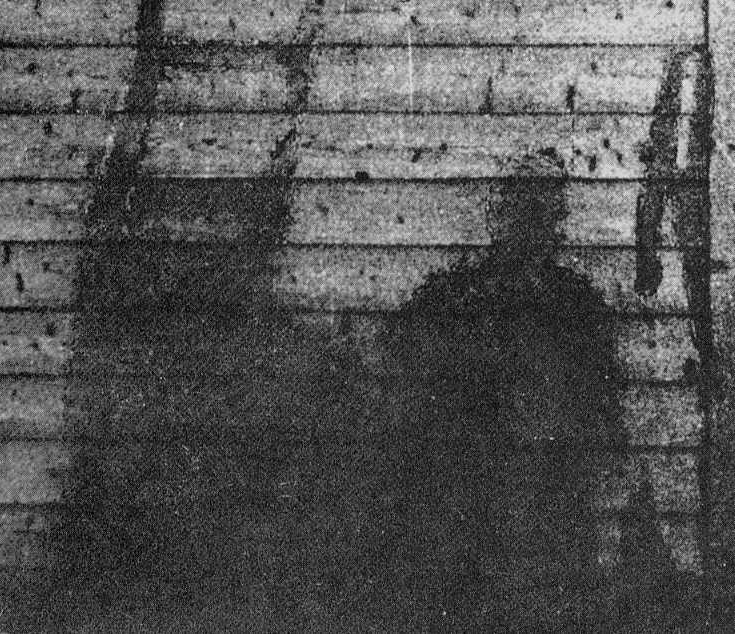Nuclear Shadows
On August 6, 1945, the United States dropped an atomic bomb on Japan; three days later, a second nuke followed. The death toll and destruction from these attacks were both immense. But the bombs, while in some cases, vaporized people in a matter of moments, the weapons also created a permanent memory of some of those killed. These creations, like the one seen below, are often called “nuclear shadows” and exist to this day.

Imagine that you’re at the beach hoping to get tan. The sun emits ultraviolet (UV) rays which, via a pair of processes (described here) causes tanning, but, depending on your skin type, may also lead to sunburns. Most people can avoid sunburns by applying sunblock which, as the name suggests, blocks many UV rays. But leave part of your body untouched by the sunblock and the UV rays get through, causing burns.
A nuclear bomb explosion works in a similar way. The explosion acts as the sun does in the example above, except that instead of emitting UV rays it emits thermal radiation. The radiation will bleach anything it ends up hitting, much like the UV rays cause sunburns. But anything that gets in the way — including a soon-to-be-vaporized body — will soak up those rays, effectively shielding whatever is behind it from the bleaching effect. In a real sense, the dead acted as a form of nuclear sunblock. The result is the “shadow” imprinted on the stairs pictured above.
The Trinity Atomic Web Site, a site dedicated to chronicling the history of nuclear weapons, has a video showing one of the shadows, etched forever on a bridge.
Bonus fact: Eating tomatoes may help stave off sunburns. According to a report by Prevention magazine, the fruit’s (or vegetable’s, it’s both) high lycopene content gets the credit; the BBC notes that lycopene is a very effective antioxidant and therefore useful in this regard. Per one study, as cited by Prevention, a group of volunteer subjects ate five tablespoons of tomato paste daily for three months, and in the end, showed a decreased rate of sunburns than the general population.
From the Archives: Beating the Bomb: On August 6, 1945, he was in Hiroshima. He survived. Three days later? He was in Nagasaki.
Related: Three bottles of sunscreen which, at the time of this writing, cost a bit over $2,000. Huh?
